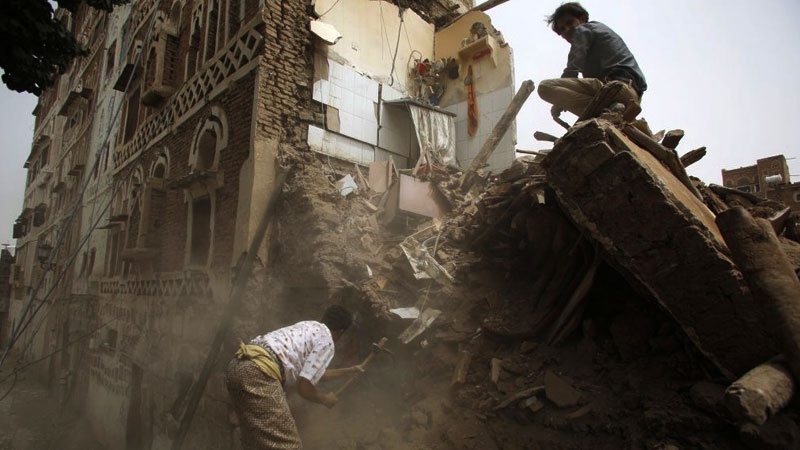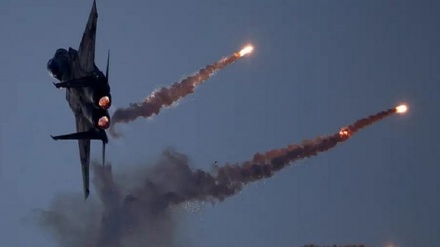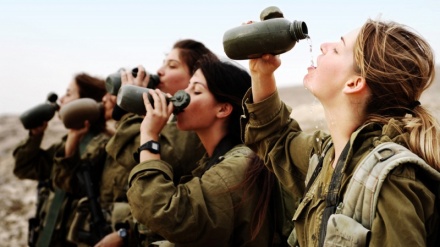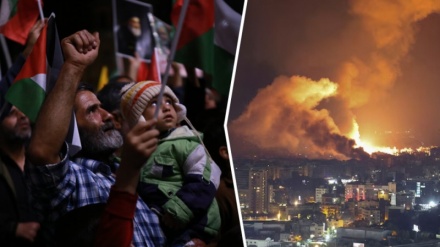World indifferent to destruction of Yemen's historic tower houses
The state terrorism of Saudi Arabia against Yemen has not only killed over 10,000 men, women, and children, besides destroying schools, hospitals, power generation plants, libraries, mosques, markets, and water works, but has also not spared the historic tower houses, which are considered the heritage of mankind.
Followings are excerpts from conscientious US journalist Mimi Kirk’s report on this crime against humanity, which would be followed by Azad Essa article: “Where’s the outrage over slaughter in Yemen?”
With so much bloodshed occurring in the world, media coverage of the conflict in Yemen often takes a backseat to those in Syria, Iraq, and Libya. But Yemen’s war is causing horrific destruction and misery for its people. Over 10,000 Yemenis have been killed, many of them civilians, and those that survive face starvation and a lack of water, electricity, and medical care. The US-backed Saudi Arabia-led coalition has been showering bombs on the Yemeni people since March 2015, after the popular Ansarullah Movement ousted the unelected and unpopular Saudi-supported president, Abd-Rabbu Mansour Hadi. A Saudi blockade and coalition air strikes have brought about much of the suffering, with little humanitarian aid getting through and a third of strikes hitting civilian sites. Some of these strikes on civilians have targeted Yemen’s historic buildings, including houses in such cities as Saada in the north and the capital, Sanaa, to its south. Sanaa is one of the oldest continuously inhabited cities in the world. Its more than 6,000 tower houses, built centuries ago, are particularly admired for their gingerbread-style exteriors patterned with fired bricks and white gypsum. “They are architectural jewels,” Michele Lamprakos, a University of Maryland architecture professor who has written a book on conservation efforts in Sanaa, says. A number of these Sanaa houses are among the at least 75 historic sites that have been damaged since the beginning of the war. In June 2015, Saudi strikes destroyed five houses. In September 2015, 10 members of the same family were killed in a strike that pummeled the tower house in which they lived. And earlier this month strikes hit the headquarters of the National Security Bureau, damaging neighboring homes.
Lamprakos says that the destruction of houses in such a dense and cohesive area threatens the city’s broader structure. “The houses are part of an integrated urban fabric,” she says. “They are grouped around gardens, which lie at the heart of religious complexes. The bombings leave gaps in this fabric, endangering buildings on either side and making the damage potentially progressive.”
It’s not the first time that the capital’s precious buildings have been threatened. In the 1970s, the introduction of amenities into the old city, such as plumbing, caused structural problems. Piped water was installed, but no drainage, precipitating rising groundwater, which led to collapsed tower houses. Local and foreign architects convinced Yemen’s government to put Sanaa up for UNESCO World Heritage Site status, with the aim of applying conservation practices to the city’s continued modernization. UNESCO carried out an international safeguarding campaign, and in 1986 granted the entire old city of Sanaa this status.
Lamprakos notes that until the current conflict, three and a half decades of sustained conservation activity had taken place, with architects, engineers, builders, craftsmen, and advocates dedicating themselves to the work. “The old city has become a source of local pride,” she says. “It represents a living building tradition that sustains the historic structure.”
Unlike many preserved historic cities in Europe and the United States, Sanaa’s old city has not been gentrified. The Yemenis who live there are often poor, and rent rather than own. The lack of wealth among the area’s residents could make it even harder to return structures to their former glory after the conflict, not to mention survive it in the meantime. Moreover, Yemen, as one of the poorest countries in the Middle East, had already been in dire straits before the war. With the country’s water supply as well as its oil production—upon which Yemen depends for its limited income—dwindling, living conditions were already deteriorating. The conflict has made this situation worse. With peace looking like it will be a long time coming, for the foreseeable future Yemen’s people simply need the basics. Only when food, water, and medicine are available can more long-term planning occur, including the restoration of Sanaa’s stunning historic houses.
“In times of conflict, the first priority is human life,” says Lamprakos. “But when the historic fabric of the city is targeted, it’s the soul of a people, of a community, that’s being targeted.”
Meanwhile Azad Essa in his article “Where’s the outrage over slaughter in Yemen,” says the lack of mobilisation over the travesty in Yemen is hypocritical. The US is still gatekeeper of this conflict and winners-losers remain the same, he adds. A fortnight ago, ballistic missiles fired by the Saudis crashed into homes in a residential area of Hodeidah in western Yemen. When the dust settled, residents described the scene as carnage. Body parts were mangled with the debris of human life, furniture, brick walls and rubble. Medics said 26 civilians were killed in the strikes. Sixty others were injured. But this is not an unfamiliar story for Yemen. Since the aerial bombardment began in March last year, led by Saudi Arabia, in conjunction with the UAE, Qatar, Sudan, Egypt, Morocco, Senegal, Bahrain, Jordan and Kuwait - over 10 000 people, including 4 000 civilians have been mercilessly killed. While the story of the intervention is masked by purported support for President Abd-Rabbu Mansour Hadi who was deposed by the popular Ansarullah Movement in January last year, Yemen has just been turned into a playground to test for the American supplied weaponry of Saudi Arabia and its coalition partners. The coalition has devastated the country, leaving millions maimed, starving and desperate. Yemen’s economy has collapsed and left a people reeling under rubble. Recently, the UN expressed alarm at the sharp rise in civilian casualties. Since August 6, when talks between the two factions collapsed, at least 329 civilians have been killed and 429 injured. The UN’s comment follows the release of a report early this month by the Yemen Data Project that found that at least one third of all airstrikes have hit civilian sites including schools, hospitals and mosques. One school in Taiz was hit nine times. It is reported that out of the 8,600 airstrikes launched, at least 3,000 hit the wrong targets. A few days earlier, it had been revealed that some 7 million people, including 1.5 million children, were battling malnutrition and that the country was on the verge of famine.
According to the latest estimates, 370,000 children are suffering acute malnutrition. Images of grotesquely sparse bodies have begun to circulate among human rights groups and aid agencies, with little effect. Oxfam says the war has left 21 million people in need of humanitarian aid, more than any other country. But international outrage to the events in Yemen remained subdued. When it is spoken about, it is described in circles as among the most forgotten on the globe. But this is a misnomer. Yemen is not forgotten, it has been willfully ignored. And given that some of the main players in the UN Security Council are trying their best to deflect from the issue, the lack of global regard for the matter is unsurprising. From the onset, Saudi Arabia has been on a campaign to divert any attention from its crimes in the country at the UN Security Council - despite not having a seat there. Foreign Policy magazine described Saudi Arabia as having “succeeded in blocking actions to restrain its military conduct and highlight the humanitarian costs of the conflict”.
Meanwhile, the US and UK - the primary benefactors in the war in Yemen - consider the alliance with Saudi Arabia as so important that they are willing to sacrifice their self-respect to keep that alliance alive. The UK has sold more than £3.7 billion of arms to Saudi Arabia since the airstrikes began. Recently the US senate voted against blocking a $1.15bn arms deal with Saudi Arabia, tabled by lawmakers who say war crimes were being committed in Yemen. Overall, the Obama administration has sold $100bn worth of arms to the Kingdom.
Many observers say the US is only supporting Saudi Arabia and the war does not live up to any international standards of scrutiny, nor is there is any endgame in sight. Even the UN has tapered accusations at the behest of the Saudis. In June, UN secretary-general Ban Ki-moon said he had removed the Saudi-led coalition in Yemen from a UN blacklist for violating child rights because the Kingdom threatened to cut funding to the UN. “This was one of the most painful and difficult decisions I have had to make,” he said at the time. The US however is still the gatekeeper of the conflict. The Saudis do not have the technical know-how to run a campaign of this nature on their own and need US expertise to continue its campaign. But little is likely to change. Yemen has been for the longest time, a poor, reclusive, abused country. And its war has remained purposefully enslaved by its masters, and ignored. Even by Muslims. Very few in the disparate parts that make up the so-called Muslim world from Malaysia, Indonesia, and Pakistan to Tunisia have managed to raise their voices against the catastrophic attack against people in Yemen. So while millions of Muslims embarked on the Hajj pilgrimage to Saudi Arabia this month, hundreds of people in neighbouring Yemen were being massacred. The lack of mobilisation over the travesty in Yemen is hypocritical. But on deeper inspection, it is clear that Saudi Arabia here, again, is a mere servant of the American Empire. The winners-losers of this conflict remain the same.
AS/ME



